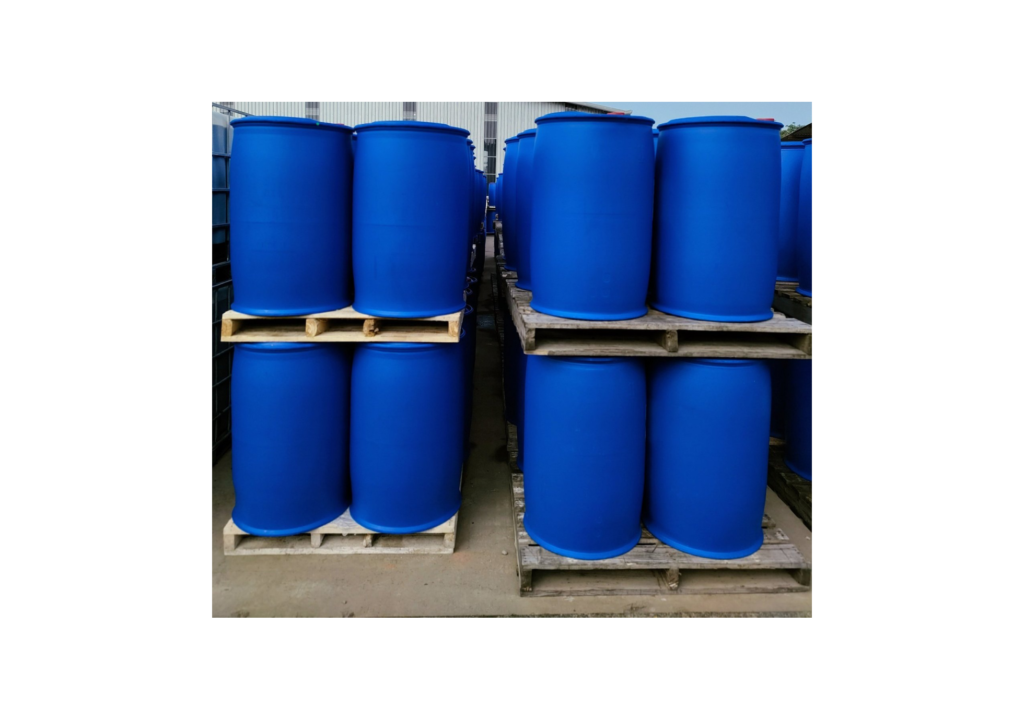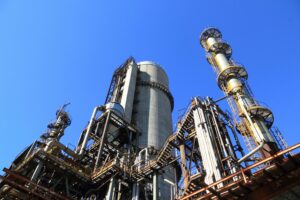
Liquor ammonia, also known as aqueous ammonia, is a solution of ammonia gas (NH₃) dissolved in water. This solution typically contains 20-30% ammonia by weight and is widely used in various industrial applications due to its effective cleaning and disinfecting properties.
Specifications of Liquor Ammonia
- Chemical Formula: NH₄OH
- Ammonia Content: Typically 20-30% by weight
- Molecular Weight: 35.05 g/mol
- Density (25% Solution): Approximately 0.90 kg/L (at 20°C)
- Boiling Point: 37.7°C
- Appearance: Clear, colorless liquid with a pungent odor
- Melting Point: -57.5°C
- Vapor Pressure: 483 hPa (at 20°C)
Grades of Liquor Ammonia
Liquor ammonia is available in different grades based on the percentage of ammonia content. These grades cater to various applications and requirements:
- 10-15% Ammonia Content:
- Usage: Used for light industrial cleaning purposes.
- Applications: General surface cleaning and mild disinfection.
- 20-25% Ammonia Content:
- Usage: Suitable for both light and moderate industrial applications.
- Applications: More robust cleaning tasks, mild disinfection, and pH adjustment in water treatment.
- 25-30% Ammonia Content:
- Usage: Commonly used in heavy industrial applications.
- Applications: Manufacturing of fertilizers, textiles, and plastics; industrial cleaning; and water treatment processes.
Benefits of Liquor Ammonia
- Effective Cleaner: Liquor ammonia is a powerful cleaner, capable of cutting through grease, grime, and stains.
- Disinfectant Properties: It has strong disinfecting properties, making it useful for sanitizing surfaces.
- Cost-Effective: Compared to other cleaning agents, liquor ammonia is relatively inexpensive.
- Versatility: Can be used in various industrial applications, from chemical synthesis to water treatment.
Uses of Liquor Ammonia
- Industrial Applications:
- Used in the production of fertilizers, plastics, explosives, and textiles.
- Employed in water treatment processes to adjust pH levels.
- Agriculture:
- Used as a nitrogen source in some fertilizers.
- Can be used to treat straw and other animal feeds to improve nutritional value.
- Pharmaceuticals:
- Used in the manufacture of various pharmaceuticals.
- Acts as a stabilizing agent in some chemical formulations.
Safety Considerations
Liquor ammonia is a hazardous chemical and must be handled with care. Key safety considerations include:
- Protective Equipment: Always wear appropriate protective gear, including gloves, goggles, and a face shield, when handling liquor ammonia.
- Storage: Store in a cool, well-ventilated area away from sources of heat and direct sunlight. Containers should be tightly closed to prevent leaks and evaporation.
- Handling: Ensure proper ventilation in areas where liquor ammonia is used. Avoid inhaling fumes and ensure it does not come into contact with skin or eyes.
- Emergency Measures: Have emergency eyewash stations and safety showers available in case of accidental exposure. Be familiar with first aid procedures for ammonia exposure.
Packaging of Liquor Ammonia
Liquor ammonia is available in various packaging options to suit different needs and quantities. Common packaging options include:
- Carboys:
- Capacity: Typically 20 to 50 liters. Liquor Ammonia is usually sold by the Kg from 30 kgs to 50 Kgs in every carboy
- Usage: Suitable for medium-scale industrial use and agricultural applications.
- Material: Durable, chemical-resistant plastic with secure sealing.
- Drums:
- Capacity: Typically 200 liters. Liquor Ammonia is usually sold by the Kg from 180 kgs to 190 Kgs in every drum
- Usage: Ideal for large-scale industrial applications.
- Material: Made of chemical-resistant materials like HDPE or steel with corrosion-resistant lining.
- IBC Containers:
- Capacity: Usually 1000 liters. Liquor Ammonia is usually in sold by the Kg upto 1000 kgs in every IBC Container
- Usage: Used for bulk storage and transportation in industrial settings.
- Material: Durable plastic or metal with reinforced frames.
- Tankers:
- Capacity: Can vary significantly, with capacities ranging from 10 Tons to 15 Metric Tons.
- Usage: Used for large-scale industrial applications and transportation over long distances.
- Material: Made of high-grade steel, equipped with advanced safety features.
Price of Liquor Ammonia
The price of liquor ammonia varies based on factors such as concentration, quantity, supplier, and market demand. Prices are also subject to change based on global market conditions, production costs, and supply chain factors. For the most accurate and up-to-date pricing, it is advisable to contact suppliers directly.
Conclusion
Liquor ammonia is a versatile and cost-effective chemical solution used in various industrial applications, from chemical synthesis to water treatment and agriculture. Its powerful cleaning and disinfecting properties make it a valuable resource in many fields. However, due to its hazardous nature, it must be handled with care, adhering to strict safety protocols. Understanding its specifications, benefits, uses, safety measures, packaging options, and price is crucial for anyone involved in its application or handling.
For more detailed information and to purchase liquor ammonia, it is recommended to reach out to reputable suppliers who can provide quality products and expert guidance







